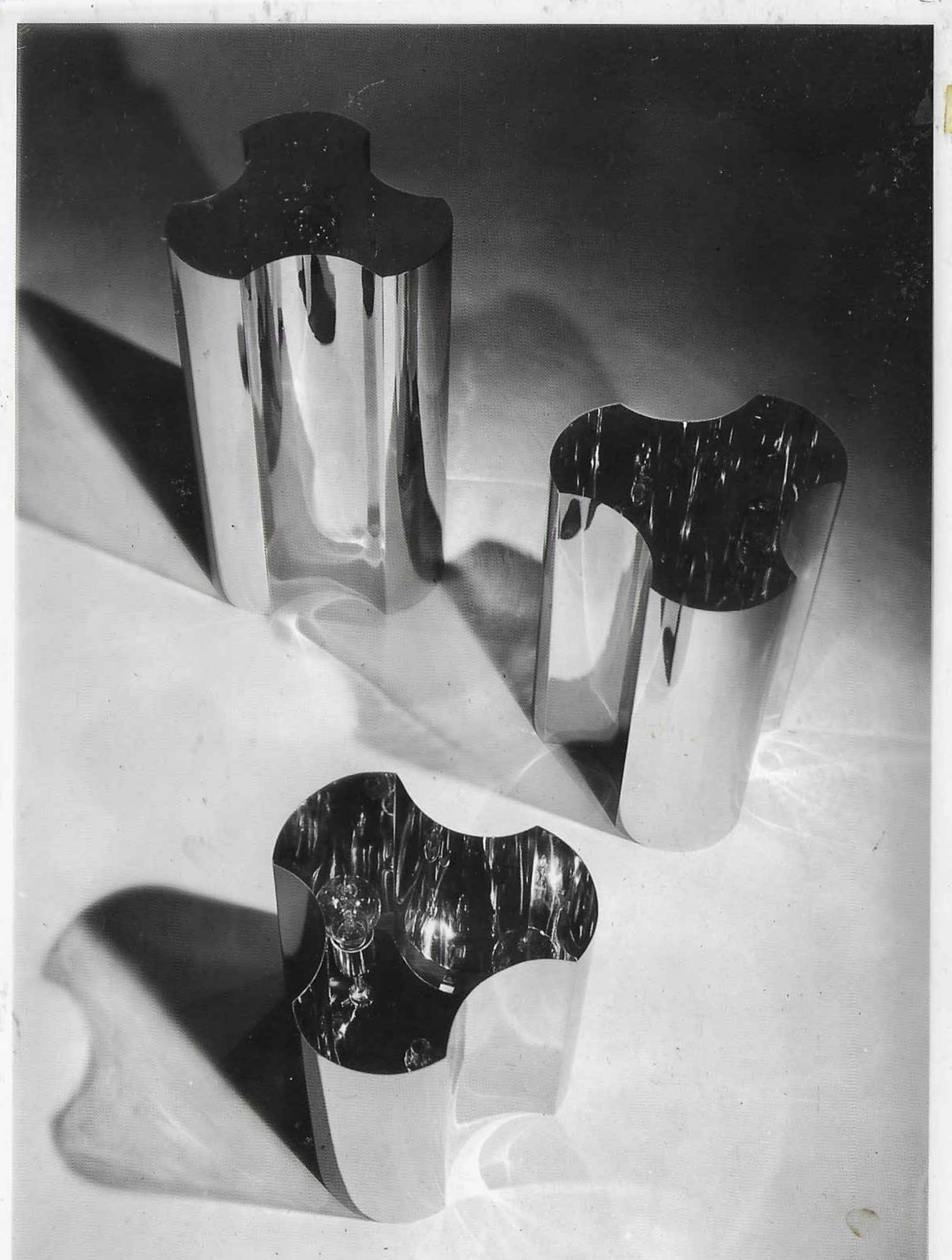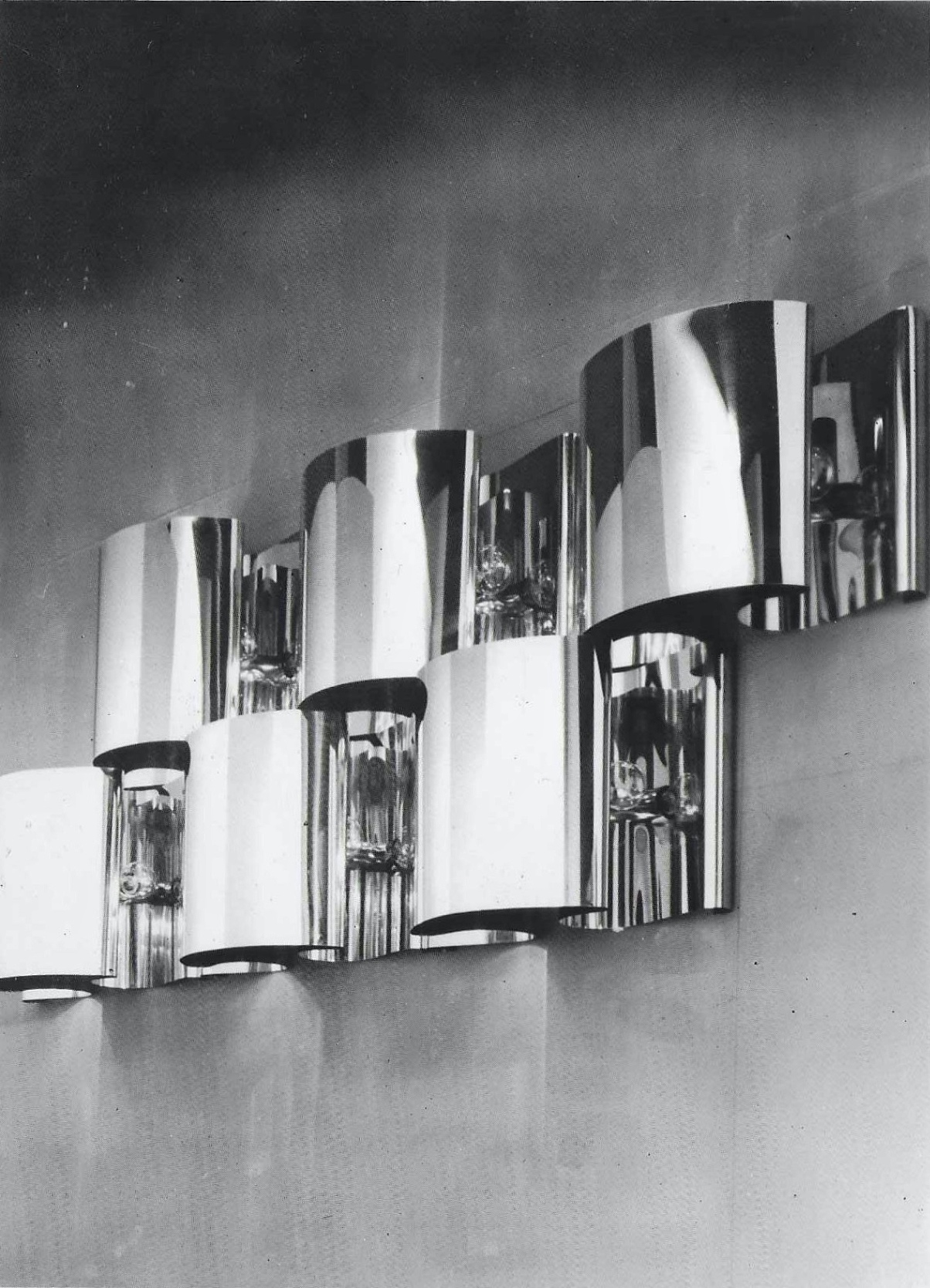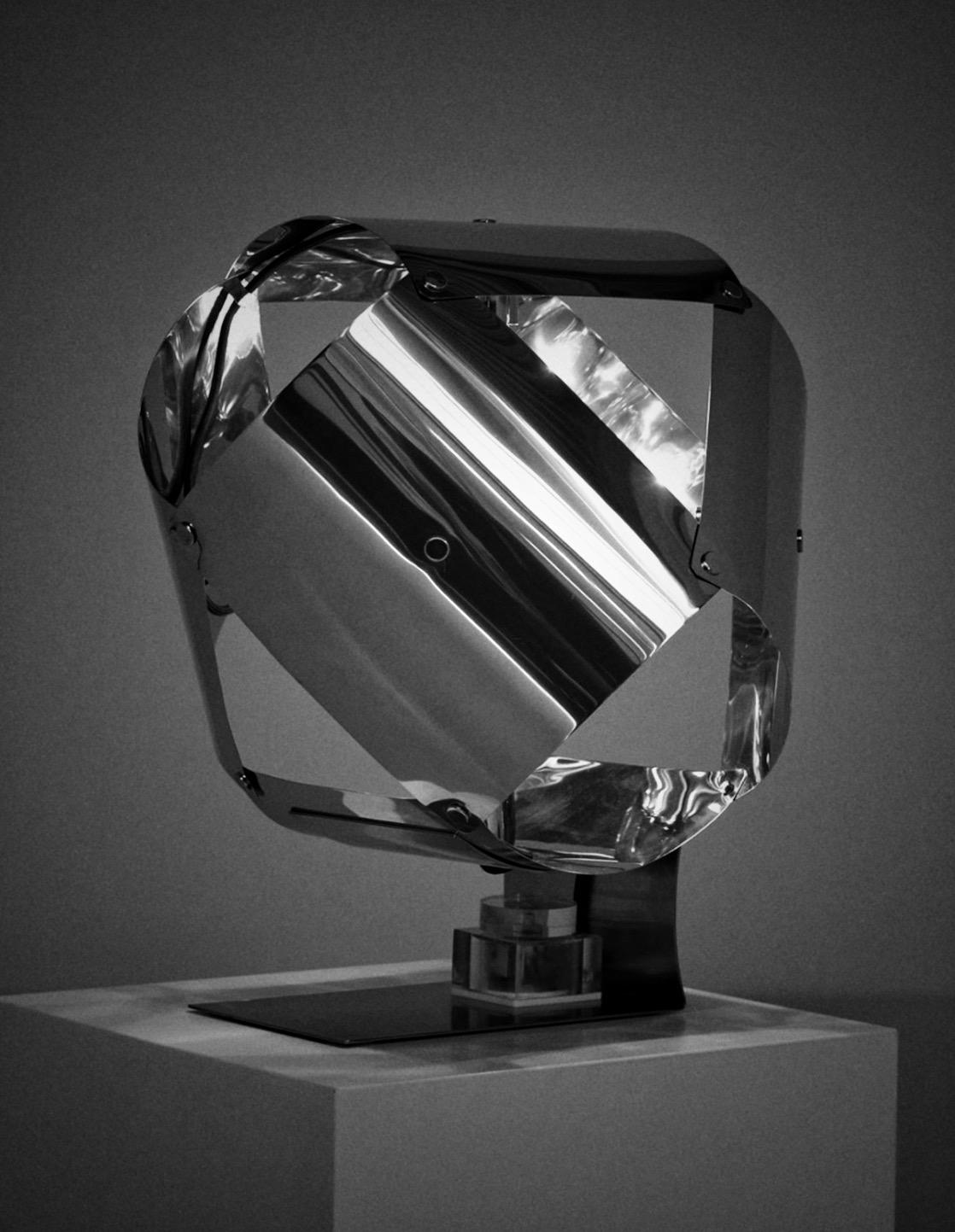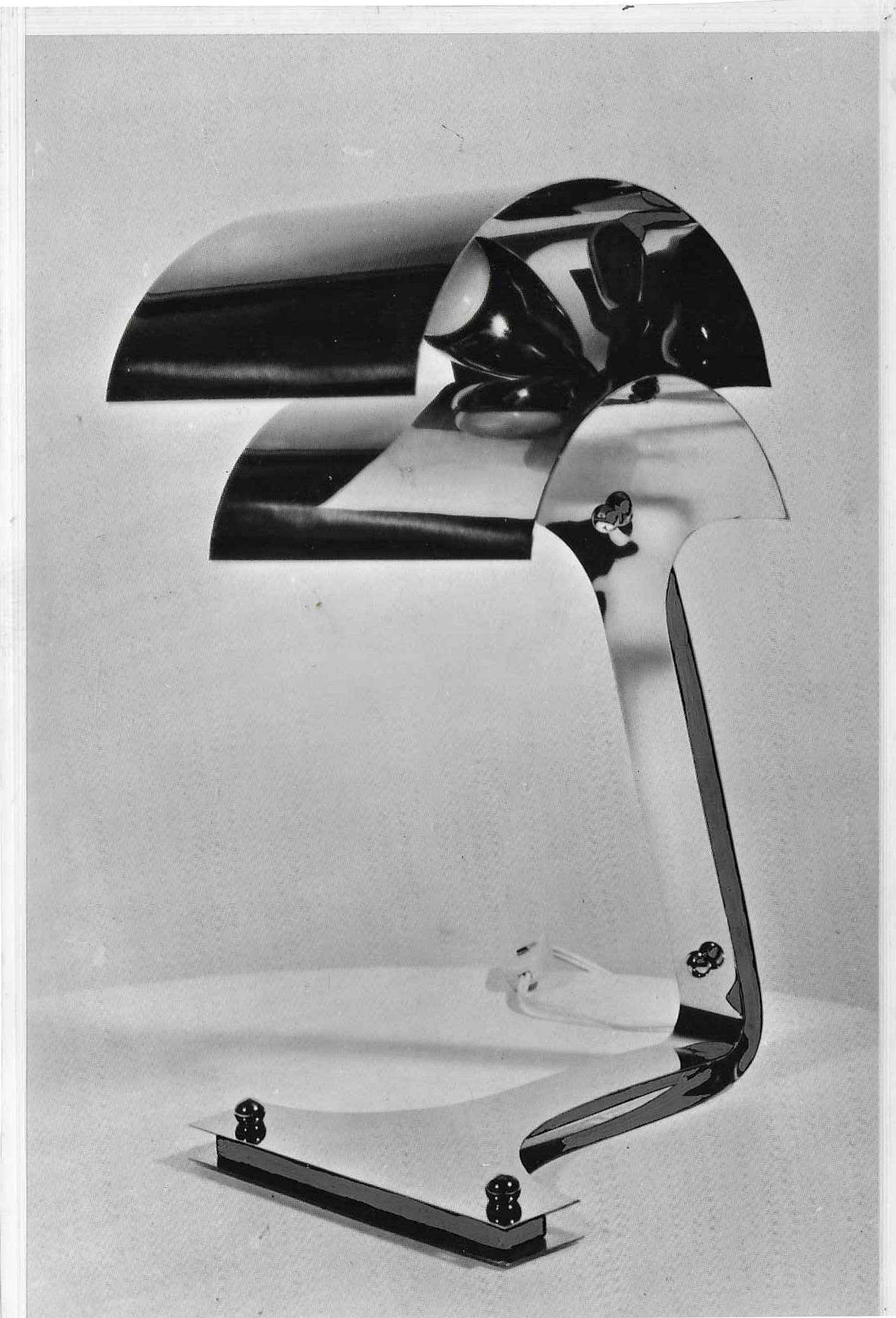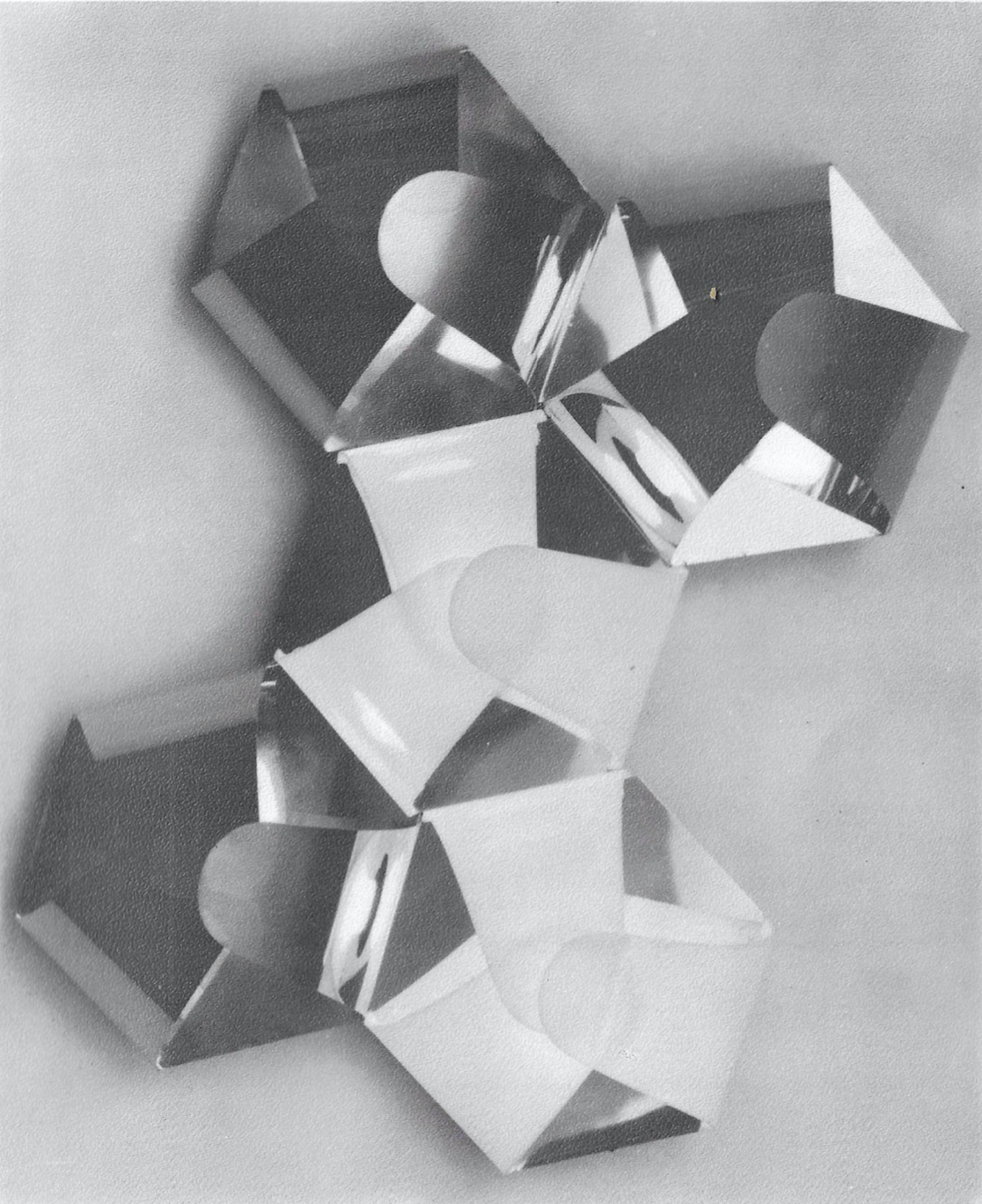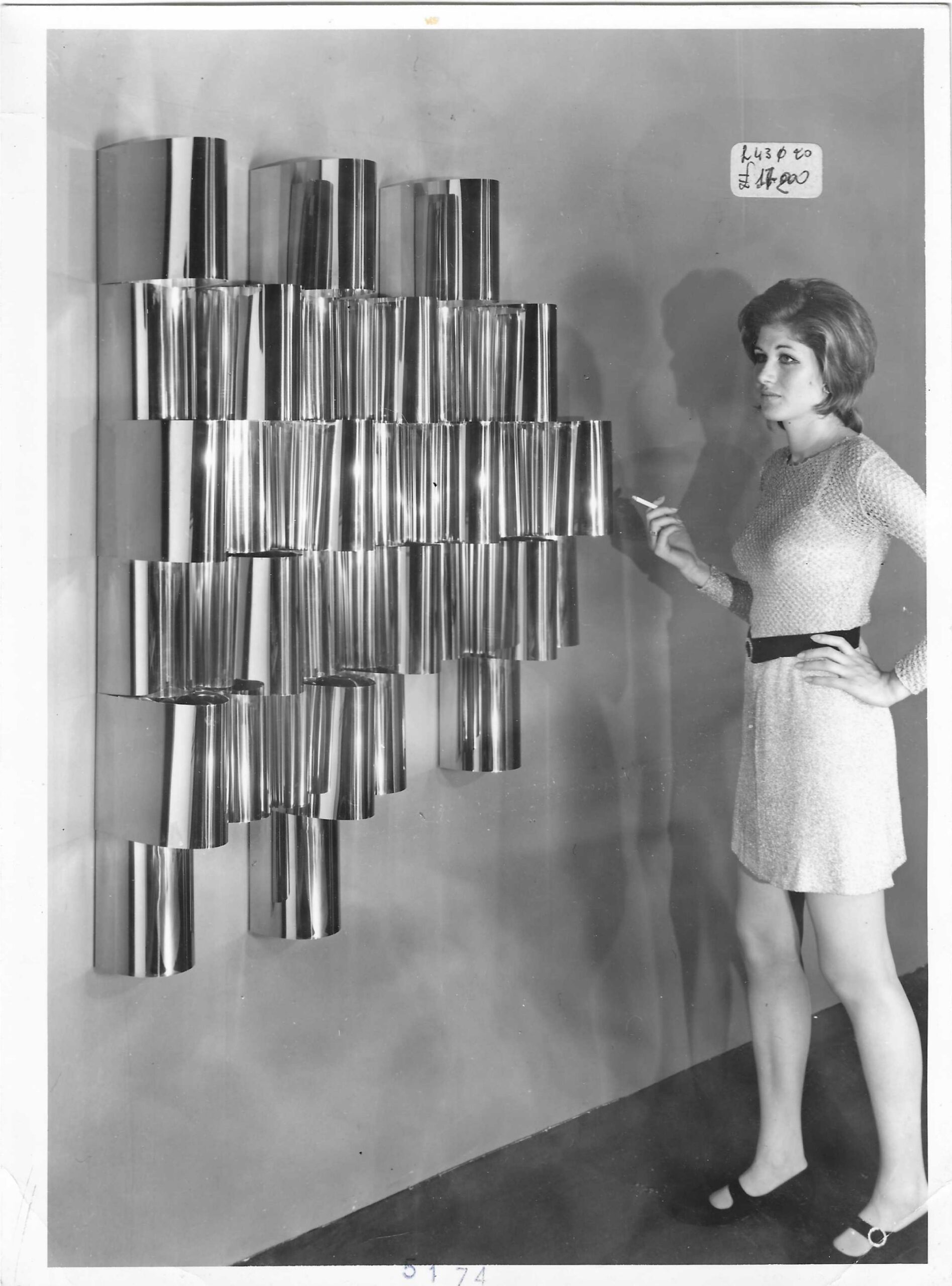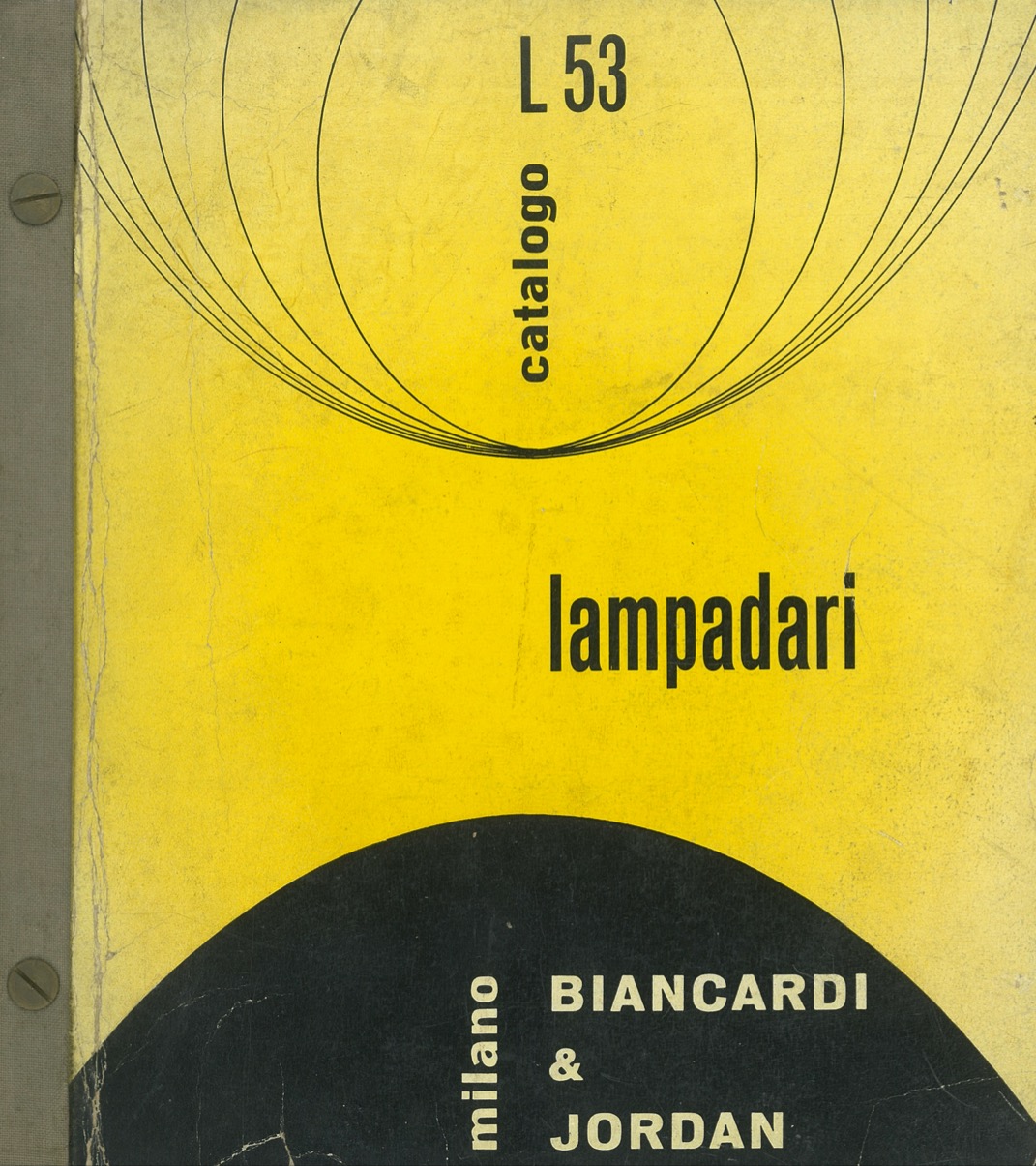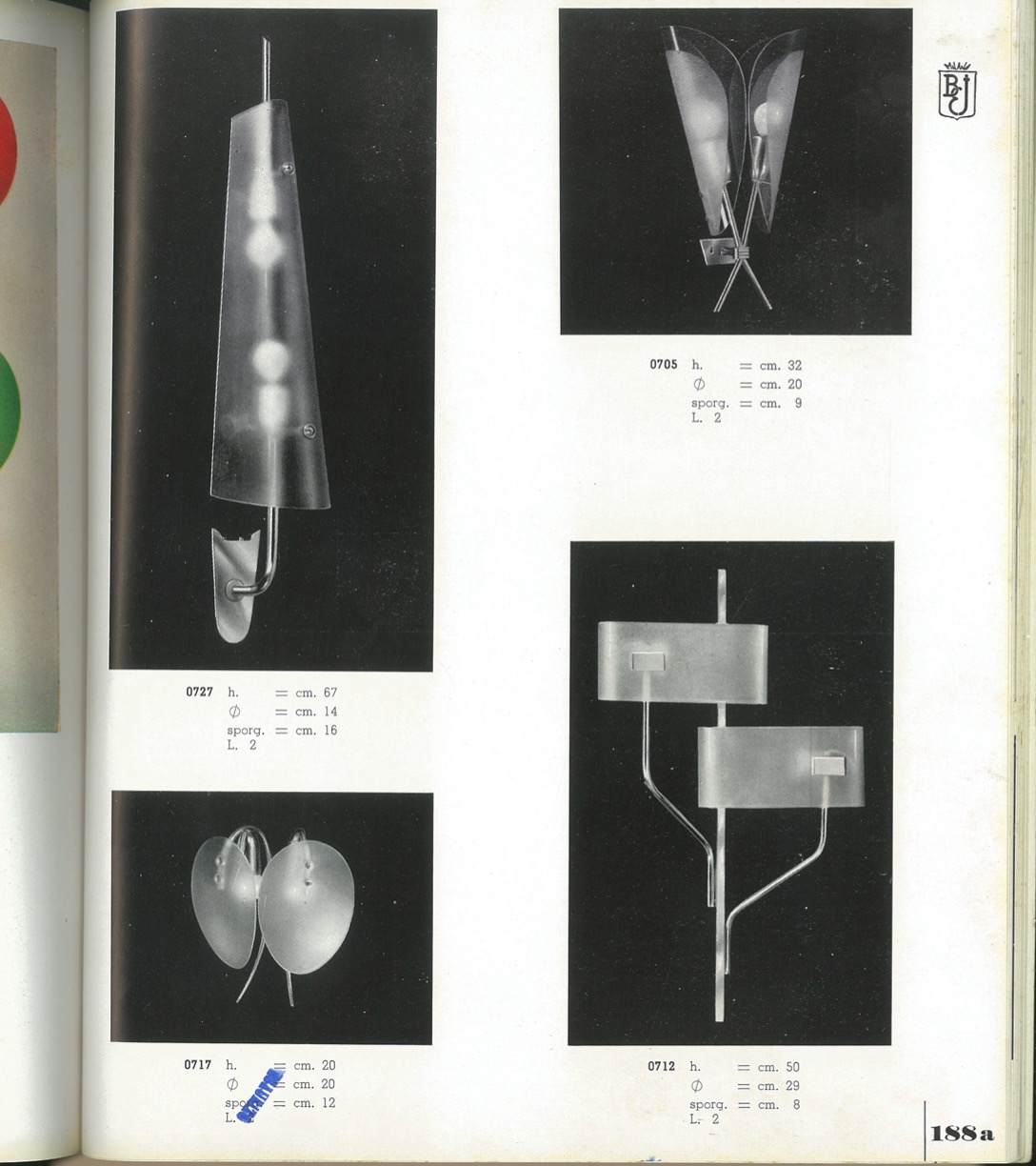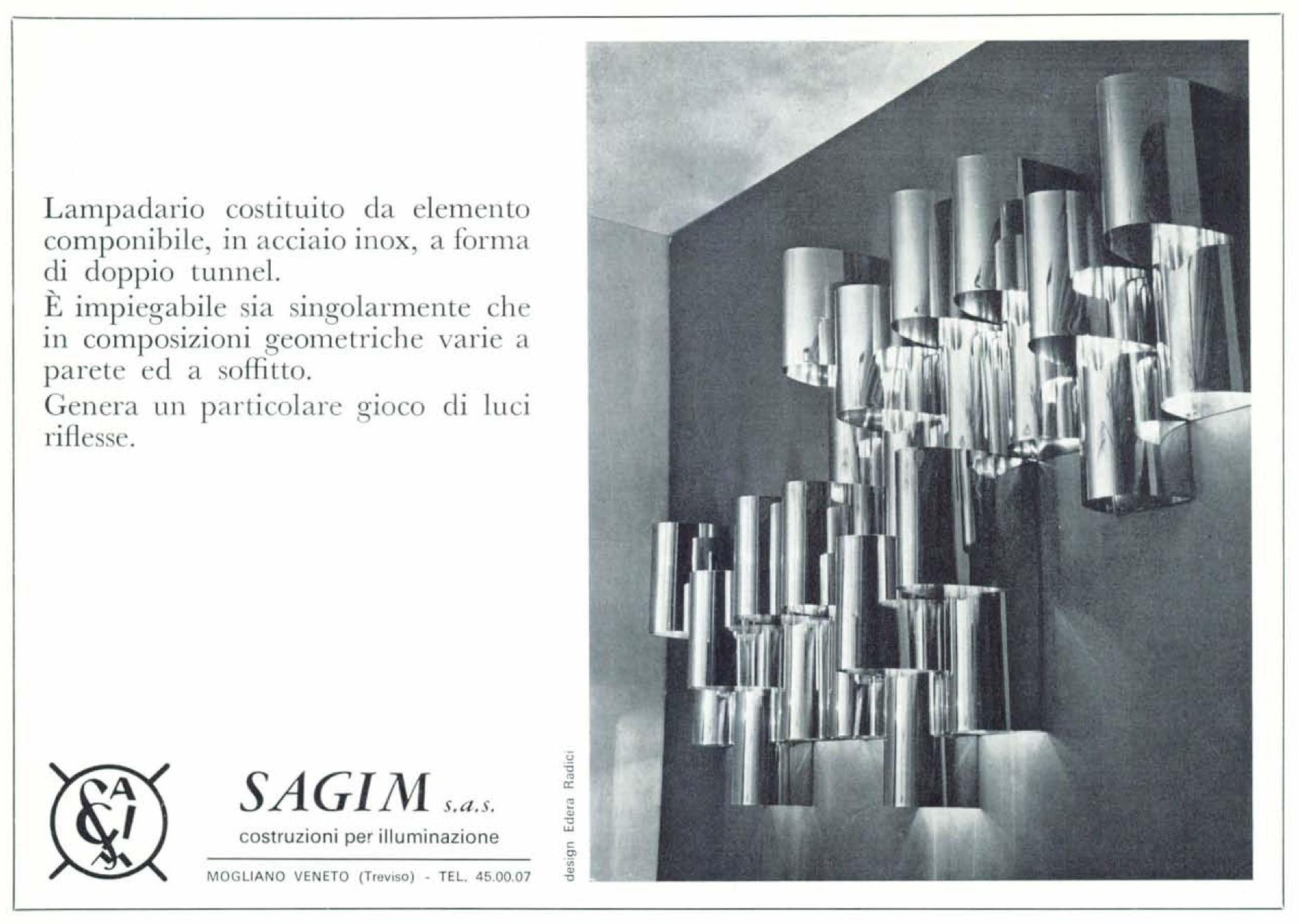

“Costruzioni per illuminazione.”
Introduction
During my buying trips in Italy, I regularly visit a furniture collector and restorer by the name of Giuseppe. For over 25 years, his passion for vintage lamps and furniture has been unwavering. Throughout all these years, he has gained a lot of knowledge about local furniture and lamp manufacturers from northern Italy. With his passion also comes a great and dusty collection of all kinds of literature, furniture and lamps. During one of my last visits to his warehouse last year, my eyes fell on a pile of old drawings of lamps. They were from a company named Sagim, which was based in the Treviso region near Venice, Italy. I had never heard of this name before and I was immediately intrigued. Giuseppe told me that he gathered all the papers himself from the long abandoned factory with the help of a concierge who had worked at the Sagim factory. I’ve been given the opportunity to examine each piece of this paper archive and write a story about it. This archive includes hundreds of photos, drawings, catalogs, correspondence and various other pieces of literature. This archive allows me to map almost the entire production process and collection of Sagim. From the first sketch to the manufacturing blueprint. So little is known about Sagim and the things they created. We’re changing that and giving Sagim the appreciation they deserve.

Materials gathered from the abandoned Sagim factory

Various catalogs of Sagim's lighting
Who were Sagim?
Sagim was an Italian lighting manufacturer established in Mogliano, Italy. The company was founded in the early 1950s, and for about 35 years, they created many types of lighting fixtures, encompassing domestic options like table lamps, floor lamps and hanging lamps, as well as tailored lighting solutions for businesses such as retailers, hotels, and even naval enterprises like the Reunited Shipyards of the Adriatic.
Sagim was a relatively small lighting company with only one establishment that was used as an office, factory and showroom. Their establishment was an old building from the 19th century spanning about 3000 m2. It was a healthy company that made many different lamps. We think that during their entire existence, they produced between 1000 and 2000 different models.
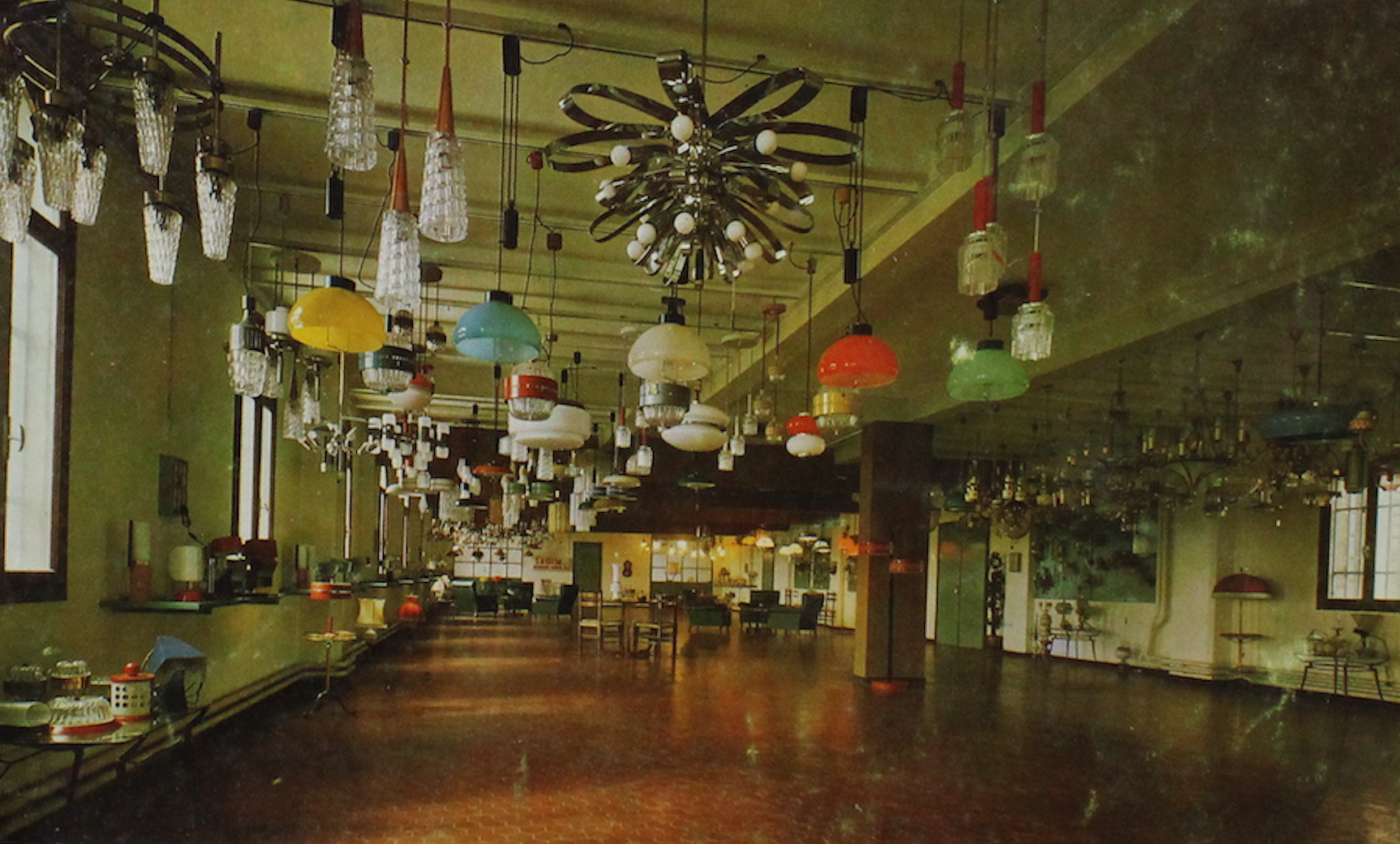
Lighting showroom within Sagim's establishment
The company collaborated with architects and interior designers, owning a Technical Office (Ufficio Tecnico) dedicated to planning and selecting lighting fixtures for various commercial spaces. They didn’t just offer standard lighting but also offered solutions, including custom glass chandeliers for hotels and tailored solutions for businesses like shoe stores. Sagim established extensive networks not only within Italy but also in Germany. They sourced glass parts from the renowned German manufacturer Doria Leuchten. Moreover, for their vibrant glass lamps and chandeliers, Sagim established multiple associations with Murano-based glass artisans such as La Murrina and Vinicio Vianello.
Throughout their roughly 35-year tenure until their closure in 1985, Sagim’s lamps evolved with the times, adapting to new trends, technological advancements and innovations.
Initially, their production started with classic Italian lighting; some of them were similar to the more renowned manufacturers like Stilnovo and Fontana Arte, but most of their collection featured a lot of bohemian-like chandeliers and other ordinary lighting fixtures, often featuring combinations of traditional materials such as glass and brass. In the second half of the 1960s, production became more colorful and modern, but it wasn’t until about 1970 that Sagim began a total transformation of their principles.
Interestingly, most of Sagim’s designers remain virtually unknown in the design world, except for notable names like Gianmaria Potenza (former owner of La Murrina) and Lino Tagliapietra, both of whom are distinguished Maestri from Murano, famed for their delicate and organic glass objects.

Mod. 5218 by Lino Tagliapietra

Mod. 5397 by Gianmaria Potenza
Radicalization:
Towards the end of the 1960s, a radical change in the approach to the disciplines of architecture and design emerged. Fascinated by everything that happened in those years in the world of art, politics, music and literature, the artists struggled to express themselves through the languages of rationalist philosophy. This flow was a social reform action achieved through artistic expression. This period, between 1968 and 1972, was the beginning of a major change in the design culture of the West and especially in Italy. During this period, accessibility to new materials like plastic increased. It’s the combination of innovation and the radical shift in design disciplines that significantly amplified the creative freedom of designers. Many Italian lighting manufacturers left their mark on this new design paradigm, including Sagim.

Radical design lighting 1965 - 1972 (Picture by DESTE Foundation)
During this period of radicalization, Sagim embraced a new design ethos and underwent a total revamp of their brand, one that was highly futuristic and incomparable to their previous styles. The dated Sagim logo gave way to a sleeker “S” designed by Edera Radici.

Old logo and corporate identity


